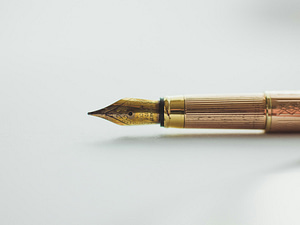Are you interested in investing in a gold IRA but unsure about how to calculate its value? Look no further! In this article, we will guide you through the process of calculating your gold IRA, enabling you to make informed decisions about your investment. With our friendly and easy-to-understand explanations, you'll be equipped with the tools to effectively analyze and determine the worth of your gold IRA. So, let's dive in and unlock the secrets to accurately calculating your gold IRA!
Understanding Gold IRA
Explanation of Gold IRA
A Gold IRA, also known as a precious metals IRA, is a type of retirement account that allows individuals to invest in physical gold and other precious metals. Unlike traditional IRAs that mainly invest in stocks, bonds, and mutual funds, a Gold IRA provides investors with the opportunity to diversify their portfolios and protect their wealth against inflation and economic uncertainties.
Differentiating between Gold IRA and conventional IRA
The main difference between a Gold IRA and a conventional IRA lies in the types of assets held in the account. While a conventional IRA typically consists of paper assets like stocks and bonds, a Gold IRA includes physical gold, gold coins, silver, platinum, and other approved precious metals. By holding tangible assets, a Gold IRA provides investors with a hedge against market volatility and currency devaluation.
Benefits of investing in Gold IRA
Investing in a Gold IRA offers numerous benefits, making it an attractive option for retirement planning. Firstly, gold has proven to retain its value over time, making it a reliable store of wealth. Additionally, gold often moves inversely to the stock market, providing a level of protection during economic downturns. Moreover, investing in gold is a great way to hedge against inflation, as precious metals tend to rise in value when the purchasing power of fiat currency decreases.
Criteria for Gold in IRA
Qualification of gold bars
To qualify for inclusion in a Gold IRA, gold bars must meet certain standards. These bars must have a minimum fineness of 99.5% and be produced by a recognized refiner or government mint. The weight of the bars can vary, but they must be larger than 10 ounces.
Qualification of gold coins
Gold coins are another popular option for a Gold IRA. To be eligible, coins must be produced by a national government mint and have a fineness of at least 99.9%. Some examples of qualifying gold coins include American Eagle coins, Canadian Maple Leaf coins, and Australian Kangaroo coins.
Approved precious metals
In addition to gold bars and coins, certain other precious metals are also eligible for inclusion in a Gold IRA. These include silver, platinum, and palladium. However, it's important to note that not all types of precious metal products are approved for IRA investment. Therefore, it is crucial to ensure that any precious metal being considered for investment meets the criteria set by the IRS.
Setting up a Gold IRA Account
Choosing a reliable custodian
Setting up a Gold IRA requires the expertise of a custodian, also known as a gold IRA company or trustee. It is vital to choose a reliable and reputable custodian to ensure the safekeeping of your precious metals and compliance with IRS regulations. When selecting a custodian, it is important to consider factors such as their experience in the industry, reputation, fees, and the services they provide.
Rolling over existing IRA into Gold IRA
If you already have an existing IRA, you can roll over the funds into a Gold IRA without incurring any taxes or penalties. This process involves transferring the assets from your conventional IRA account to a Gold IRA custodian. It is essential to follow the IRS rules and regulations for the rollover to ensure a smooth and tax-efficient transfer.
Initial deposit and subsequent contributions
To set up a Gold IRA, you will need to make an initial deposit. The amount required for the initial deposit may vary depending on the custodian you choose and the specific products you wish to purchase. After the initial deposit, you can make subsequent contributions to your Gold IRA, either on a one-time or recurring basis. It is important to consult with your custodian to determine the contribution limits and any applicable fees.
Calculating the Value of Gold IRA
Assessing the total amount of physical gold in your IRA
To calculate the value of your Gold IRA, you need to determine the total amount of physical gold held in your account. This can be done by reviewing your account statements or contacting your custodian. Take note of the weight and purity of the gold bars or coins in your possession.
Determining the current market value of gold
Once you have assessed the quantity and quality of the gold in your IRA, you need to determine its current market value. The price of gold fluctuates daily based on supply and demand dynamics, economic conditions, and other factors. You can check the current spot price of gold through financial news websites, precious metal dealers, or your custodian.
Calculating the value of your gold IRA
To calculate the value of your Gold IRA, multiply the weight of your physical gold by its current market value. For example, if you have 10 ounces of gold with a spot price of $1,500 per ounce, the value of your Gold IRA would be $15,000. Remember to account for any additional precious metals, such as silver or platinum, within your IRA.
Factors Affecting Gold Prices
Global economic conditions
Gold prices are heavily influenced by global economic conditions. Economic factors such as interest rates, inflation rates, geopolitical tensions, and government policies can significantly impact the price of gold. When there is economic uncertainty or instability, investors tend to flock to the safety of gold, driving up its price.
Supply and demand
Like any other commodity, the supply and demand dynamics play a crucial role in determining gold prices. Gold mining production, central bank reserves, and investor demand for gold jewelry, coins, and bars all impact the supply and demand balance. A decrease in supply or an increase in demand can cause gold prices to rise, while an oversupply or decrease in demand can lead to price declines.
Inflation
Inflation is another key factor affecting gold prices. As the value of paper currency decreases due to inflation, investors seek to preserve their purchasing power by investing in assets like gold. When inflation rates rise, the demand for gold tends to increase, driving its price up. Gold is often considered a hedge against inflation, making it an attractive investment during times of rising prices.
Maintaining Gold IRA
Regular deposit of funds
To maintain your Gold IRA, it is important to make regular deposits to ensure the growth of your retirement savings. Depending on your financial situation and investment goals, you can make contributions to your Gold IRA on a monthly, quarterly, or annual basis. Your custodian can provide guidance on the contribution limits and any applicable fees.
Rebalancing your Gold IRA
As with any investment portfolio, it is important to periodically rebalance your Gold IRA to ensure that your asset allocation aligns with your investment objectives. Rebalancing involves reviewing and adjusting the proportion of gold and other precious metals in your portfolio based on market conditions and your risk tolerance. Consult with your custodian or a financial advisor for guidance on rebalancing your Gold IRA.
Keeping track of gold prices
To effectively manage your Gold IRA, it is essential to stay informed about gold prices and market trends. Monitor the spot price of gold regularly to assess the performance of your investments and make informed decisions. Numerous financial news websites and precious metal dealers provide real-time updates on gold prices, allowing you to stay up-to-date with market fluctuations.
Liquidating Gold IRA
Process of liquidation
When it comes time to liquidate your Gold IRA, the process can vary depending on the custodian and the specific requirements of your account. Generally, you will need to contact your custodian and inform them of your intent to liquidate. They will guide you through the necessary steps, which may include completing paperwork and arranging for the physical delivery or sale of your precious metals.
Tax implications
Liquidating your Gold IRA may have tax implications, so it is important to consult with a tax professional or financial advisor before making any decisions. Depending on your circumstances, you may be subject to taxes on the gains realized from the sale of your precious metals. By understanding the tax rules and regulations, you can make informed choices that optimize your retirement income.
Possible penalties for early withdrawal
If you decide to liquidate your Gold IRA before reaching the age of retirement, typically 59 ½ years old, you may be subject to early withdrawal penalties. The IRS imposes a 10% penalty on the distribution amount for early withdrawals from retirement accounts. It is crucial to consider these penalties and factor them into your decision-making process to avoid any unexpected financial consequences.
Gold IRA Risks
Swings in gold prices
One of the primary risks associated with a Gold IRA is the price volatility of gold. Gold prices can experience significant swings, which can affect the value of your investment. It is important to be prepared for these fluctuations and have a long-term investment strategy that aligns with your risk tolerance and investment goals.
Storage and insurance cost risks
Since a Gold IRA involves physical possession of precious metals, there are additional costs associated with storage and insurance. Proper storage of gold bars or coins is essential to protect their value, which may incur storage fees. Additionally, insurance coverage is crucial to safeguard against theft or damage, which may require additional expenses. Consider these costs when evaluating the potential risks and rewards of a Gold IRA.
Limited liquidity
Compared to conventional investment assets like stocks and bonds, gold has limited liquidity. Selling physical gold may take longer compared to selling paper assets, and the process may involve additional steps. It is important to be aware of the potential delays and challenges associated with liquidating gold and consider them when planning your retirement income strategy.
Gold IRA as a Retirement Plan
Advantages of gold IRA in retirement planning
A Gold IRA offers several advantages when it comes to retirement planning. Firstly, gold provides a hedge against market volatility and economic uncertainties, helping to protect and preserve your wealth. Secondly, gold has historically demonstrated a store of value, making it a reliable long-term investment. Additionally, by including gold in your retirement portfolio, you can diversify your assets and potentially enhance your overall returns.
Comparison with traditional retirement plans
Gold IRAs offer a distinct alternative to traditional retirement plans such as 401(k)s or Roth IRAs. Traditional plans primarily focus on stocks, bonds, and mutual funds, which may be more susceptible to market volatility. By incorporating gold into your retirement plan, you can reduce your reliance on traditional assets and potentially mitigate the risks associated with a market downturn.
Potential returns
While past performance does not guarantee future results, gold has demonstrated the potential for attractive returns over the long term. Historically, gold has provided a steady appreciation in value, offering investors the opportunity for capital appreciation. By carefully managing your Gold IRA and staying informed about market trends, you can position yourself for potential gains in the value of your precious metals.
Getting Expert Help for Your Gold IRA
Importance of getting expert advice
Navigating the world of Gold IRAs can be complex, and it is essential to seek expert advice to make informed decisions. Working with a financial advisor or gold IRA specialist can provide valuable insights into the intricacies of gold investing and retirement planning. They can help assess your financial goals, risk tolerance, and investment timeframe to develop a customized strategy that aligns with your individual needs.
Finding a reliable gold IRA advisor
When choosing a gold IRA advisor, it is important to consider their experience, credentials, track record, and reputation. Look for professionals who are well-versed in retirement planning, precious metals, and IRS regulations governing gold IRAs. Conduct thorough research, read client reviews, and ask for recommendations to find a reliable advisor who can guide you through the process.
Cost of IRA services
It is important to understand the cost structure associated with Gold IRA services. Custodians or gold IRA companies typically charge fees for account setup, storage, administration, and other services. These fees can vary among providers, so it is crucial to compare different options and consider the overall value provided. While costs are a consideration, prioritize the quality, reliability, and reputation of the custodian or advisory firm to ensure the security and effectiveness of your Gold IRA.
In conclusion, a Gold IRA offers numerous advantages for individuals looking to diversify their retirement portfolios and safeguard their wealth against economic uncertainties. By understanding the criteria for gold in an IRA, setting up a Gold IRA account, calculating the value of your investments, and navigating the risks and benefits, you can effectively incorporate gold into your retirement planning strategy. Remember to seek expert advice, stay informed about market trends, and make well-informed decisions to optimize the potential returns of your Gold IRA.





